 Finally, you can access the memory card quickly without having to open the battery door
Finally, you can access the memory card quickly without having to open the battery door
[2016-10-5 This review was originally based on a Panasonic Lumix G85 running pre-production firmware 0.2, but it is now updated after I’ve received release final release firmware 1.0 and corresponding lens firmware which enable Dual I.S. 2 support]
Panasonic has just announced their new Lumix G camera today, the Panasonic Lumix DMC-G80/G81/G85 (I will just call it G85). and I can finally share with you my findings about this latest mirrorless camera from Panasonic.
This 7th generation G series camera has a DSLR style body just like it’s predecessors, with two main dials for controlling exposure and two extra dials for the drive mode and shooting mode. There is a 3” fully articulating touchscreen, an electronic viewfinder (EVF) and a pop-up camera flash.
While part of the front body is made of metal, the G85 does still feel a bit plasticky. But at least it feels solid.
The redesigned grip feel really nice and deep, and this makes the Panasonic G85 one of the most comfortable mirrorless camera to hold and use. Apart from some minor changes like the new C2 custom mode on the mode dial, G85’s button and control layout are almost identical to the G7. If you put the two cameras side by side, it would be quite hard to identify which one is the G7 and which is the G85.
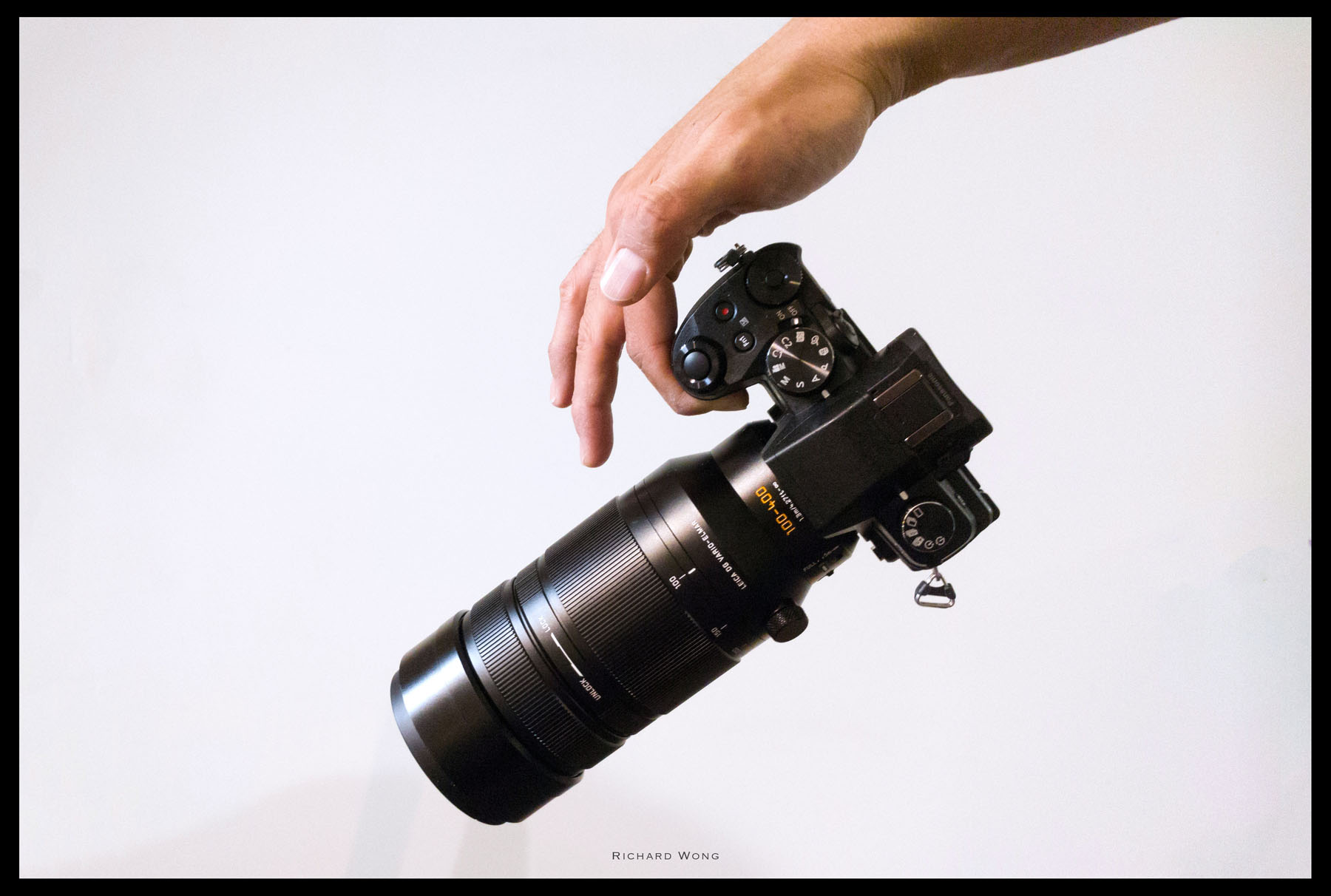 Don’t try it at home. Holding a G85 with a Leica 100-400mm (800mm equivalent focal length) using only one finger.
Don’t try it at home. Holding a G85 with a Leica 100-400mm (800mm equivalent focal length) using only one finger.
The OLED EVF’s aspect ratio is 4:3 and resolution is 2.3 Million dots. Size is increased to 0.74X (G7 was 0.7x). While it is not as big as GX8’s huge 0.77x EVF, its colour, contrast and refresh rate are all very good. However I did notice it’s quite easy for the edges of the display looks slightly blurred when my eye is not positioned exactly at the centre of the EVF. I have to adjust my eye position quite often to make the whole display nice and sharp.
The G85 is now also weather and dust proof. The first time ever for a G series camera.
The memory card slot is moved from the bottom battery compartment to the right side of the body so it can be accessed easily. For some reason, the mic jack is moved from the top to somewhere lower and much closer to the LCD screen which means the LCD screen could be blocked by external mic in some certain position. But since the mic jack location is quite far away from the LCD screen hinge, it is only a problem if you fully unfold the LCD screen and try to make the screen facing up.

The Fn1 button by default is set to Compensation screen, which allows you to adjust the exposure compensation, flash compensation and even bracketing settings quickly.
Even though the G85 may not look as sexy as some other latest mirrorless cameras, with the excellent ergonomics, really nice and deep grip and highly customisable controls and also the well implemented touchscreen interface, G85’s control and handling is just excellent.
Battery life is always an issue with mirrorless cameras. The Sigma SD Quattro I reviewed recently is one of the worst in this area. Fortunately the Panasonic G85 is one of the better mirrorless camera when it comes to battery life.
The G85 uses the BLC-12 battery, same as the G7. The official battery life figures is 330 shots per charge but I can get 400+ shots easily from a single charge shooting RAW+JPG and I’m sure I can get more if I don’t do too much photo review..etc. While heavy video shooters would definitely need to carry quite a few spare batteries, for most photographers, one or at most two battery should be enough for a day of photo shooting.
The G85 uses a 16MP image sensor with no anti-aliasing filter which I believe is the same sensor inside the GX85. Overall image quality is pretty decent. At low ISO, JPG output is clean and nice and JPGs are quite useable up to around ISO 6400/12800. (Maximum ISO is 25600)
While some maybe disappointed it’s still 16MP and not GX8’s 20MP sensor, from my previous reviews I found the actual difference between these two sensors to be really quite small.
If you are concerned about shutter shock issue that affected some Panasonic cameras like the Lumix GX8, Panasonic told me G85’s shutter module is similar to the one in the GX85 which means there should be no noticeable shutter shock issue. My own testing also confirmed that as I didn’t notice any shutter shock issue at all.
 Panasonic G85 + Panasonic Leica 100-400 f/4-6.3 @ 213mm – ISO 200 f/5.1 1/1250s
Panasonic G85 + Panasonic Leica 100-400 f/4-6.3 @ 213mm – ISO 200 f/5.1 1/1250s
The G85 also have an in-body image stabiliser (IBIS), another first for a G series camera. (And remember even the GH4 doesn’t have it) And as you probably guessing already, the camera also has the Dual I.S. technology when paired with supported optically stabilised (OIS) lens. Not only that, Panasonic told me the G85 has the new Dual I.S. 2 system which the IBIS and the OIS works together more effectively and it means better results especially at the tele-end. The official figures I got from Panasonic is that the Dual I.S. 2 is now up to 5 stops effective at 280mm equivalent focal length (140mm native).
Unfortunately the firmware for Dual I.S. 2 isn’t available yet (My G85 is running firmware 0.2) so I can’t really test how the Dual I.S. 2 performs in real life. Hopefully the final firmware will come out very soon and I’ll be able to test it before I return the camera back to Panasonic.
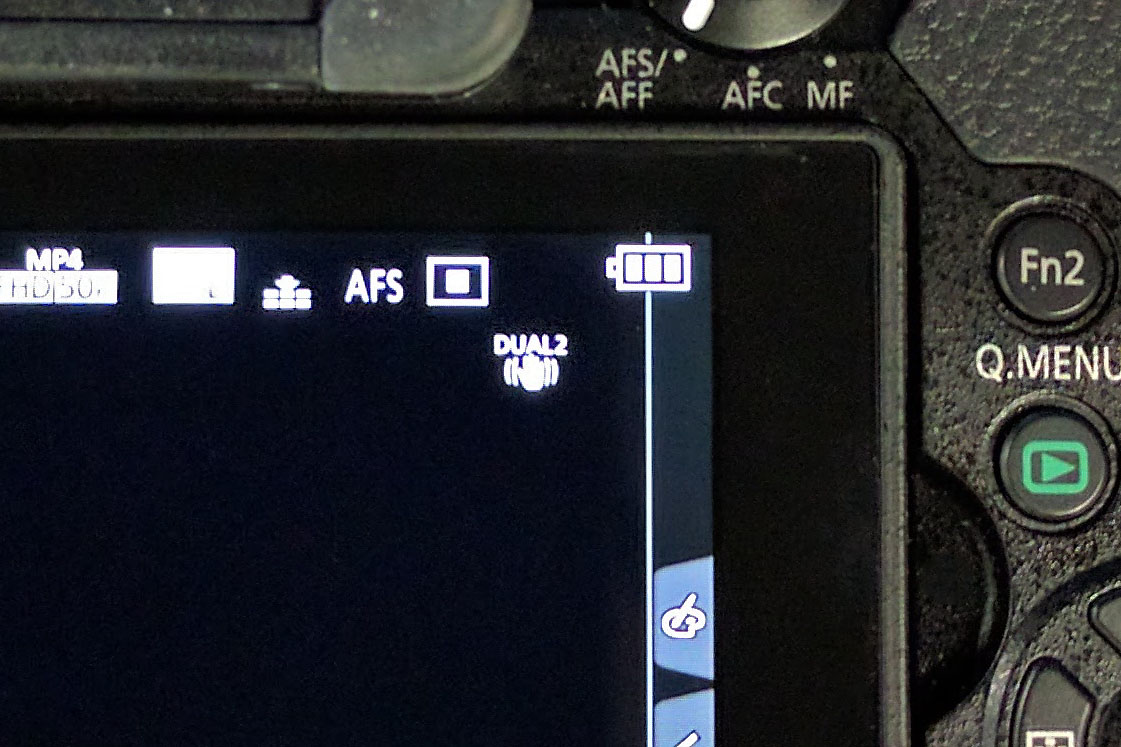 If you don’t see the “Dual2” logo, then it’s not Dual I.S. 2
If you don’t see the “Dual2” logo, then it’s not Dual I.S. 2
I’ve now received the release v1.0 firmware and also the updated lens firmware which allows me to test the Dual I.S. 2 performance. And below is a chart that shows you the the results.
Test method: I took around 20 photos at each shutter speed with I.S. on and then off, lens is Panasonic 14-140mm 3.5-5.6 Power OIS at 140mm. Camera firmware v1.0, lens firmware v1.2
Looking at the results suggests the Dual I.S. 2 system is around 5 stops effective at 140mm (280mm equivalent). Quite often my own image stabilisation test give me a lower rating than the official figures (which could be due to different testing methodology) but my results this time is pretty much what is advertised by Panasonic .
For example, with the Dual I.S. 2 turned on, I can get 100% sharp photo down to 1/10s at 140mm (280mm equivalent), this compares to 1/320s with no I.S. at all. This corresponds to a 5 stop improvement. Even when shooting at 1.6s, I was still manage to get a decent percentage of useable (but not sharp) photos. This is pretty impressive consider I was standing and handheld the camera/lens at 280mm equivalent focal length and I don’t have super steady hands.
The performance of Dual I.S. 2 is very good and definitely a noticeable improvement over the original Dual I.S. or O.I.S system.
And before you guys email and ask me, the IBIS doesn’t seem to stabilise the viewfinder during preview. At least I don’t notice any difference when I have the Panasonic Leica 25mm f/1.4 or the Panasonic 20mm f/1.7 lenses mounted on the camera.If the I.S. is turned on, the electronic viewfinder/LCD preview is always stabilised when you mount a Power OIS lens. Or if you mount a micro four third lens that doesn’t have optical stabiliser, for example the Olympus 60mm f/2.8 macro, then the preview is stabilised when you half press the shutter button.
For video shooters, the IBIS can also be used when recording videos, that includes when recording 4k video. With a non stabilised lens like the 20mm f/1.7, the inbody image stabiliser managed to remove a lot of small vibrations and delivers a smoother video. With a supported O.I.S. lens, the G85 would stablise the video footage using a combination of the IBIS, OIS and electronic image stabliser (if you enable that). The result is really pretty good even with my poor camera handling skills.
 RawDigger indicates the e-shutter RAW files are still 12bit
RawDigger indicates the e-shutter RAW files are still 12bit
Speaking of video, the G85 can record full HD video up to 60fps, at 28MBps (either AVHCD or MP4). And it can also record 4k/30p video at 100Mbps (MP4) It has 3.5mm mic jack, micro HDMI out. 4k and 1080p videos are both very sharp and clean. Compare to the flagship GH4, it’s missing some of the most advance features such as the clean 4K 4:2:2 10-bit signal HDMI output, or 96fps full HD video. But most users should be pretty happy with the G85’s video feature and output quality.
I’ve said it many times in my previous Panasonic reviews, but the autofocus system is just fantastic. Shooting static scene the autofocus is just lightning fast and dead accurate. Low light autofocus performance is very good as well.
When shooting action, with the help of the Depth from Defocus technology, continuous focus works reasonably well too when you are tracking large/predictable objects. The 6fps maximum burst rate (mechanical shutter AF-C mode) or 9fps (in AF-S mode) is fast enough for most fast action photos. The camera also has a very big image buffer which can hold 39 RAW photos, which is more than double G7’s already not too shabby RAW buffer and better than any camera in this class as far as I’m aware of.
Unfortunately shooting smaller and fast moving object with the G85 can be a bit challenging. The quite noticeable black out time between shots and the delay make it really hard for the photographer to pan the camera and follow the subject nicely. So while the G85’s continuous autofocus is probably as good as most mirrorless cameras in the market, DSLRs with their optical viewfinder still has the advantage when it comes to shooting fast hard to track subjects.
 Panasonic G85 + Panasonic Leica 100-400 f/4-6.3 @ 213mm – ISO 1000 f/5.1 1/500s
Panasonic G85 + Panasonic Leica 100-400 f/4-6.3 @ 213mm – ISO 1000 f/5.1 1/500s
4k photos/Post focus/stack focusing features are something Panasonic has been heavily promoting. Frankly I haven’t really spend too much time playing with these feature features when reviewing the last few Panasonic cameras. But I decided I really should to spend a bit more time and see what these features, especially the post focus feature can do.
Basically Post Focus features work by capturing 4k video at different focus distance and the camera can then analysis the frames from the 4k video and perform various processing depending on what the user wants. Out of all the Post Focus features, I found the image stacking the most interesting and useful.
A common problem when taking close up or macro photo is that you can’t get enough depth of field or to nail the focus point when you are handholding the camera as your depth of field is just a few millimetres in many cases. While choosing a small aperture can increase the depth of field, it reduces the amount of light captured by the camera, which means you have to increase the exposure time or ISO. When shooting indoor it usually means you need to setup a tripod to avoid camera shake or you have to push the ISO to the roof and beyond. With the focus stacking mode, you can just shoot at large aperture (and hence no need to raise the ISO or use a tripod) and then get the camera to merge the photo smartly and create a final image that has much larger depth of field or pick the focus range you want. The focus stacking user interface is pretty well designed. While it did take me a few minutes to figure out exactly how to control everything. But once I figured it out how it works, it’s very quick and easy.
Above is an example comparing the results from focus stacking and normal shooting. The left is the original photo I took. Focus was on the second stormtrooper Lego minifigure, and at f/5.6 all the other minifigures are not in focus. The centre photo, I changed the aperture to f/22 (minimum aperture for that lens), and because of that I have to increase the ISO to 12800 which results in poor image quality. Despite that, the minifigure at the far end is still not completely in focus. The photo on the right is the result of focus stacking. Aperture was reverted to f/5.6 and ISO was back to 1600. After focus stacking, all the four minifigures are sharp and interestingly the background stays completely blurred. You may notice the photo framing seems to be a bit tighter, it’s because the focus stacking mode doesn’t use the full sensor size. I like the result from focus stacking more than the centre photo a lot more.
However, the stacking mode is not without flaws.
Firstly, I noticed I can get some pretty weird result ocassionaly. For example, the photo on the left was the result when I took the photo under fluorescent lights and with a fast shutter speed. But to be fair, any experienced shooter would tell you shooting at fast shutter speed under fluorescent lights is a no-no and a newb mistake (that I just made LOL)
Secondly, since the photo is created from 4k video footage, the output image resolution is only 8MP. While 8MP is good enough for most kind of usage, I just can’t help but wonder when Panasonic will give us 6K photos mode which means full size 16MP photos from Post Focus features. If Panasonic can do that it would be really awesome!
[Edited 19/9/16] Panasonic has just announced 18mp 6k photo modes are indeed coming to their next generation flagship GH5 some time in 2017
But anyway, I actually quite enjoy playing with the post focusing features and I can imagine they can be quite useful for people that shoot a lot of macro photos.
The Panasonic Lumix G85 is a nice update to the G series family. The G7 was not a bad camera at all but now with the addition of in body image stabiliser (and really impressive Dual I.S. 2 performance), larger EVF, weather seal, and no shutter shock issue make the G85 a much more versatile camera for either photo or video shooters. And probably perfect for those of you who shoot both photos and videos regularly.
The local price of the G85 here in New Zealand will be very similar to the current Panasonic GX8 price, and a bit cheaper than the GH4. The metal body GX8 and GH4 definitely feel nicer and more solid in hand than the plasticky G85. They also offer things like huge EVF (GX8) and advance video features (GH4) that the G85 doesn’t have. But on the other hand, with the help of the latest in-body image stabiliser and Dual I.S. 2, the G85 is possibility the more practical and sensible choice unless you really need one of those missing feature.
Reviewer: Richard Wong
Richard is a multi-award winning wedding/portrait photographer based in Auckland, New Zealand. Richard’s website is www.photobyrichard.com
If you like my review, please follow me on Facebook and Instagram 🙂
https://www.facebook.com/ReviewByRichard
https://www.instagram.com/photo_by_richard/
All photos and text Copyright© 2016 www.photobyrichard.com. All photos and text may not be copied or reproduced in any format without obtaining written permissions
Sample Photos
All samples were shoot in JPG, then some minor adjustment using Adoble Lightroom CC 2015.5. No vignetting, CA, distortion correction or noise reduction.
 Panasonic G85 + Panasonic 12-60 f/3.5-5.6 @ 12mm – ISO 200 f/7.1 1/200s
Panasonic G85 + Panasonic 12-60 f/3.5-5.6 @ 12mm – ISO 200 f/7.1 1/200s
 Panasonic G85 + Panasonic 12-60 f/3.5-5.6 @ 18mm – ISO 200 f/7.1 1/160s
Panasonic G85 + Panasonic 12-60 f/3.5-5.6 @ 18mm – ISO 200 f/7.1 1/160s
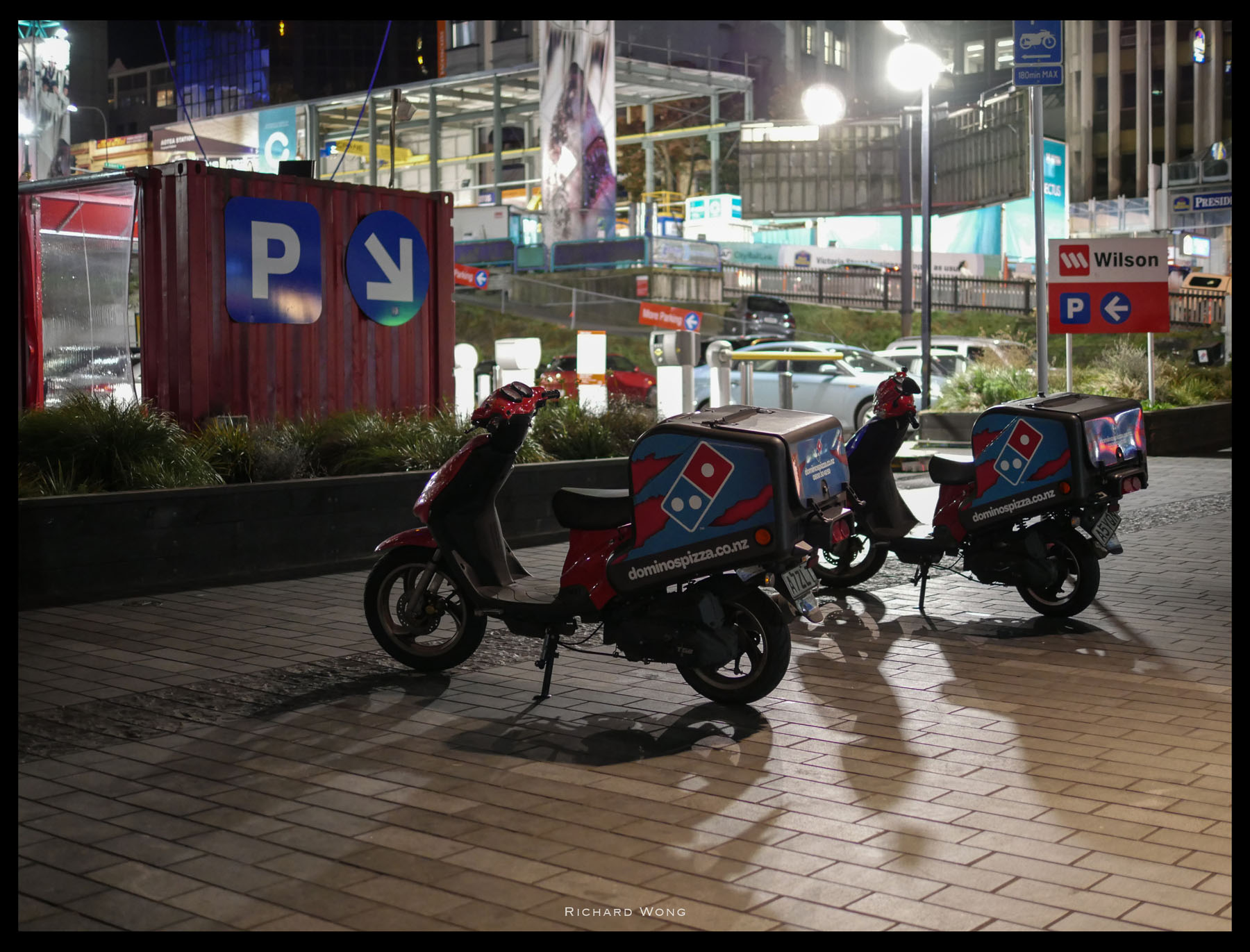 Panasonic G85 + Panasonic Leica 25mm f/1.4 – ISO 2000 f/1.4 1/60s
Panasonic G85 + Panasonic Leica 25mm f/1.4 – ISO 2000 f/1.4 1/60s
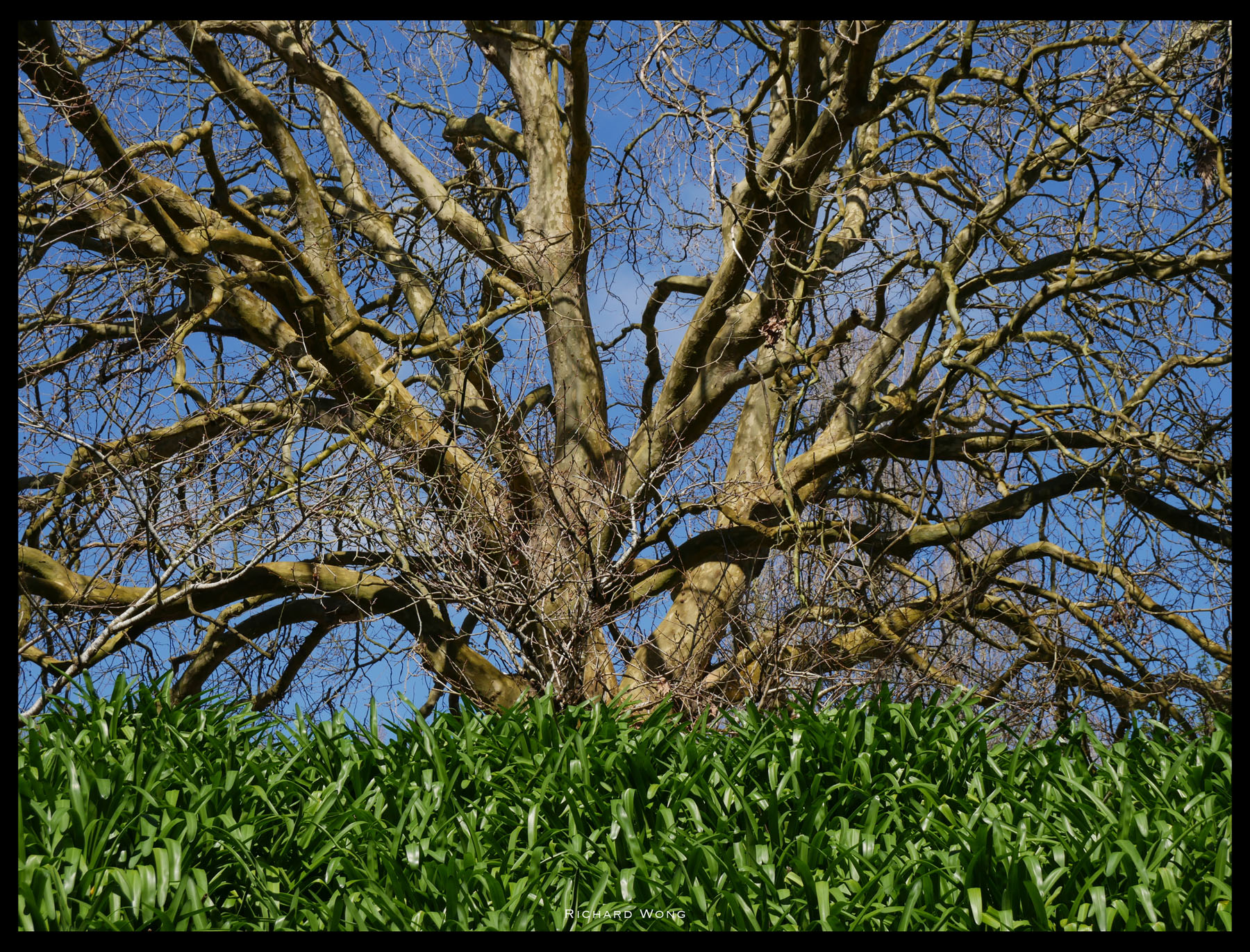 Panasonic G85 + Panasonic 12-60 f/3.5-5.6 @ 40mm – ISO 200 f/8 1/500s
Panasonic G85 + Panasonic 12-60 f/3.5-5.6 @ 40mm – ISO 200 f/8 1/500s
 Panasonic G85 + Panasonic Leica 25mm f/1.4 – ISO 200 f/2.8 1/3200s
Panasonic G85 + Panasonic Leica 25mm f/1.4 – ISO 200 f/2.8 1/3200s
 Panasonic G85 + Panasonic Leica 25mm f/1.4 – ISO 500 f/1.4 1/100s
Panasonic G85 + Panasonic Leica 25mm f/1.4 – ISO 500 f/1.4 1/100s
 Panasonic G85 + Panasonic Leica 25mm f/1.4 – ISO 800 f/2.8 1/25s
Panasonic G85 + Panasonic Leica 25mm f/1.4 – ISO 800 f/2.8 1/25s
 Panasonic G85 + Panasonic Leica 25mm f/1.4 – ISO 320 f/2.8 1/60s
Panasonic G85 + Panasonic Leica 25mm f/1.4 – ISO 320 f/2.8 1/60s
 Panasonic G85+ Panasonic Leica 100-400 f/4-6.3 @ 100mm – ISO 200 f/5.6 1/400s
Panasonic G85+ Panasonic Leica 100-400 f/4-6.3 @ 100mm – ISO 200 f/5.6 1/400s
 Panasonic G85 + Panasonic Leica 25mm f/1.4 – ISO 200 f/2 1/80s
Panasonic G85 + Panasonic Leica 25mm f/1.4 – ISO 200 f/2 1/80s
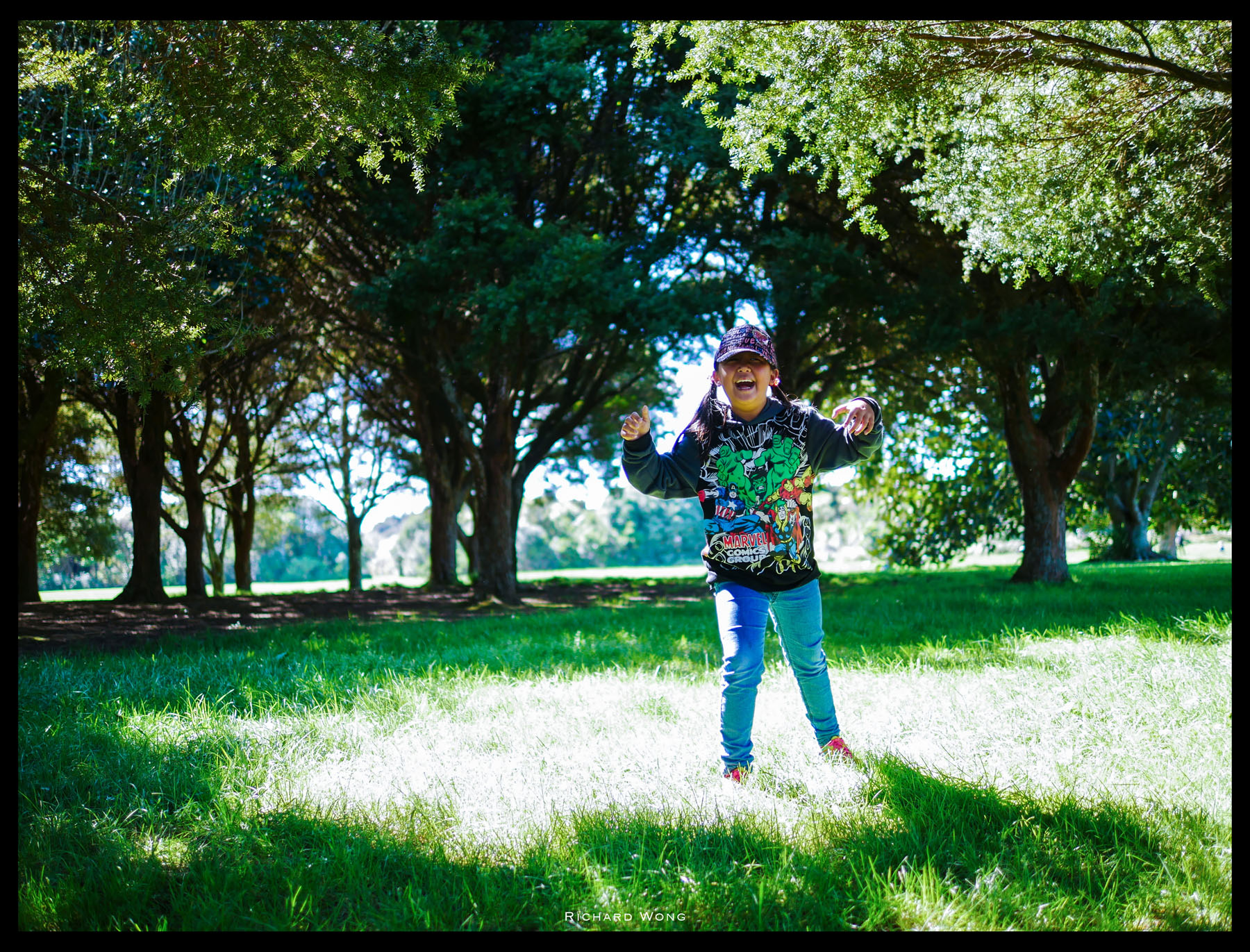 Panasonic G85 + Panasonic Leica 25mm f/1.4 – ISO 200 f/1.4 1/640s
Panasonic G85 + Panasonic Leica 25mm f/1.4 – ISO 200 f/1.4 1/640s
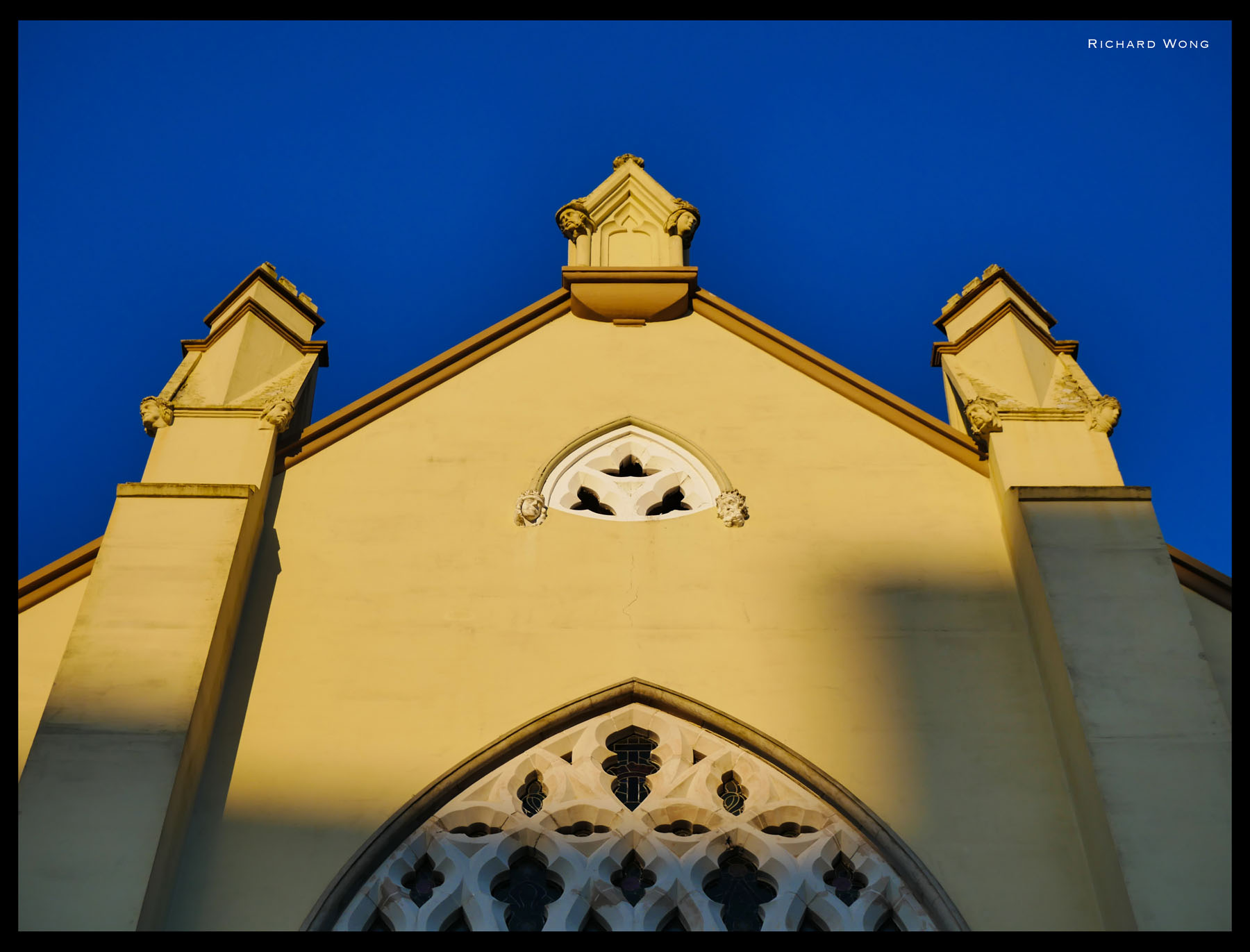 Panasonic G85 + Panasonic 12-60 f/3.5-5.6 @ 30mm – ISO 200 f/5.6 1/640s
Panasonic G85 + Panasonic 12-60 f/3.5-5.6 @ 30mm – ISO 200 f/5.6 1/640s
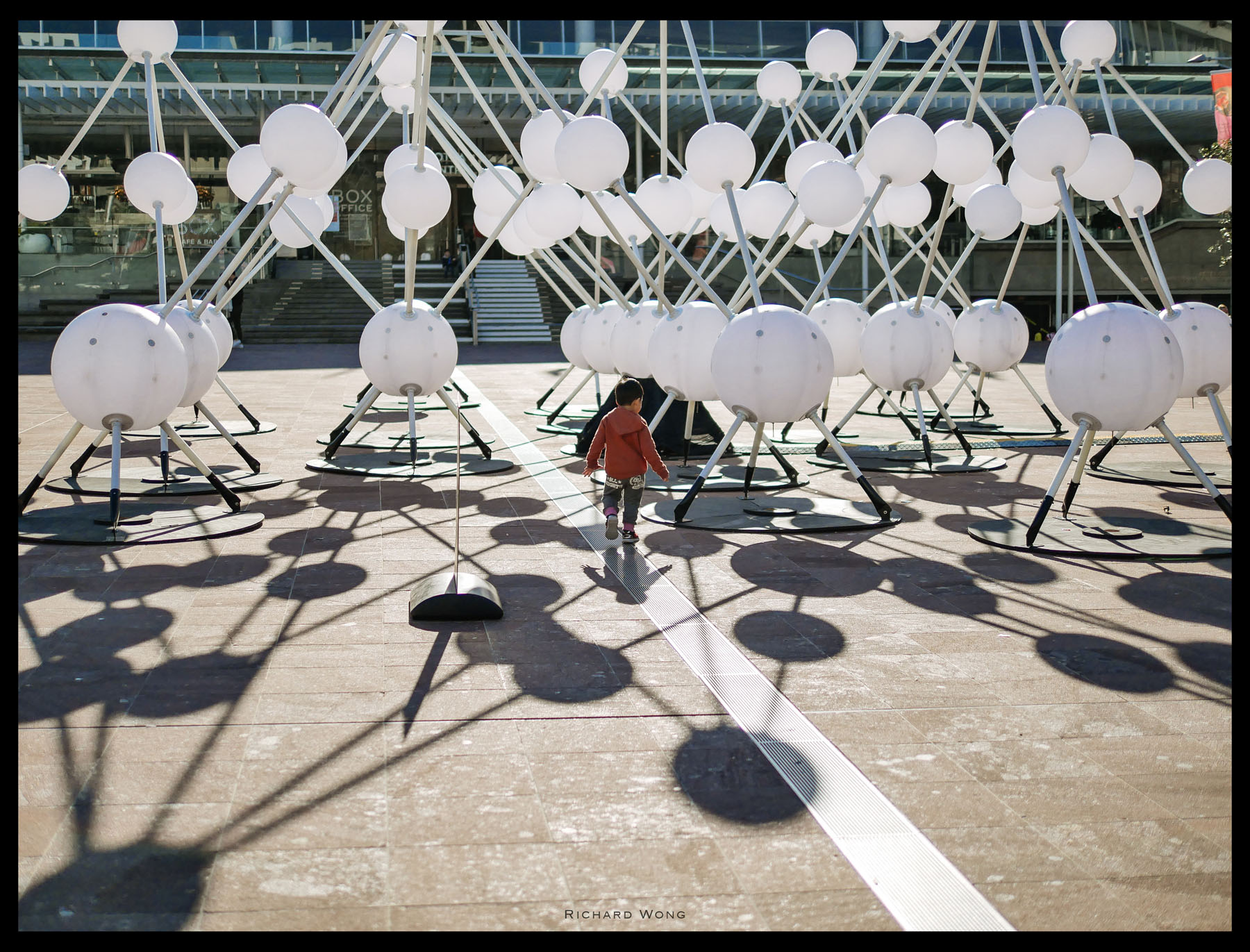 Panasonic G85 + Panasonic Leica 25mm f/1.4 – ISO 200 f/1.4 1/12800s
Panasonic G85 + Panasonic Leica 25mm f/1.4 – ISO 200 f/1.4 1/12800s
 Panasonic G85 + Panasonic Leica 100-400 f/4-6.3 @ 124mm – ISO 200 f/7.1 1/1250s
Panasonic G85 + Panasonic Leica 100-400 f/4-6.3 @ 124mm – ISO 200 f/7.1 1/1250s
 Panasonic G85 + Panasonic 12-60 f/3.5-5.6 @ 12mm – ISO 200 f/7.1 1/400s
Panasonic G85 + Panasonic 12-60 f/3.5-5.6 @ 12mm – ISO 200 f/7.1 1/400s
 Panasonic G85 + Panasonic 12-60 f/3.5-5.6 @ 13mm – ISO 200 f/5.6 1/400s
Panasonic G85 + Panasonic 12-60 f/3.5-5.6 @ 13mm – ISO 200 f/5.6 1/400s








Comments are closed.